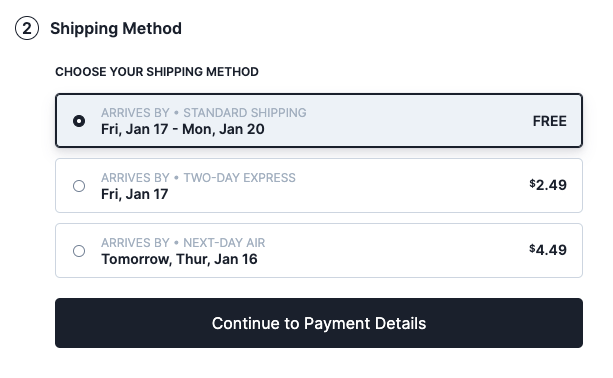When shoppers get to the Shipping Methods step in the checkout, they have one main concern: “When will I receive my order?” The answer to that has traditionally been a business-centric approach of displaying delivery speed, e.g. “Standard: 2 Business Days – $4.49”.
This approach forces users to research, calculate, and guess when they will actually receive the order.
- “Does this site also need order processing time? If so, is that included in the shipping time?”
- “What are the business days of this store? Do I have to include Saturday when calculating my delivery date? What are the business days of the shipping service provider? Do I have to include that as well?”
- “It’s 9pm now. Does Next Day Delivery mean tomorrow or the day after?”
And even after doing this, an element of vagueness still remains. Is this something users have to go through to know something as basic as, “When can I expect to receive my order?”
When provided with a Shipping Date, however, users won’t have to be concerned about the current weekday, calendar holidays, order processing time, order cut-off time etc. All they will have to think about is, “Should I pay the extra $2 to receive the order on Friday, 15th May rather than Monday, 18th May.”
Note: With great clarity comes great responsibility. Now that users have a clear delivery date, they will interpret it as a clear promise of delivery by that date. It is important to keep this delivery date promise since it may have a profound long-term impact if the user’s expectation of a clear “promise by the site” is broken. Ergo, it’s equally important that the calculation is as accurate as possible. Too much safety margin and users may abandon for the delivery options being too slow/expensive. Too little and users will be disappointed if the site’s promise is not kept.
This is how the delivery date is displayed in our soon-to-be-released Linear Checkout for WooCommerce plugin
